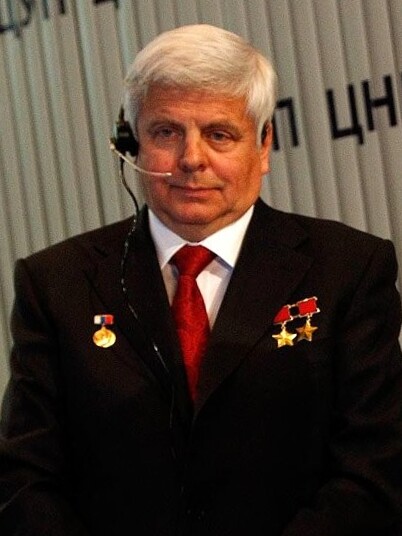1. Early Life and Personal Background
Vladimir Solovyov was born on 11 November 1946 in Moscow, the capital city of the then Soviet Union. Details about his early childhood and formative years are not widely documented, but his path led him to a distinguished career in the Soviet and later Russian space programs. In his personal life, Solovyov is married and has two children, maintaining a private family life alongside his prominent public career.
2. Cosmonaut Career
Vladimir Solovyov's comprehensive career as a cosmonaut spanned significant milestones in Soviet and Russian space exploration, marked by his roles as a flight engineer on two major missions and his subsequent leadership in space station operations. His contributions were instrumental in advancing scientific research in orbit and facilitating the transition between generations of space habitats.
2.1. Selection and Early Assignments
Vladimir Solovyov's journey to becoming a cosmonaut began with his selection on 1 December 1978. This marked the formal start of his intensive training to prepare for the rigors of space flight and the complex operations involved in orbital missions. While specific early assignments prior to his first flight are not detailed, his selection initiated a period of rigorous preparation focused on systems engineering, flight dynamics, and onboard scientific procedures, equipping him for the demanding role of a flight engineer.
2.2. Soyuz T-10 Mission
Solovyov's first space mission commenced aboard the Soyuz T-10 spacecraft, which launched on 8 February 1984. As a flight engineer, he journeyed to the Salyut 7 space station, where the crew spent nearly 237 days, a significant duration in orbit. During their extended stay, Solovyov and his crew members were engaged in numerous scientific experiments, particularly focusing on space medicine and space manufacturing. These experiments aimed to understand the long-term effects of microgravity on the human body and to explore the feasibility of producing materials in space. The mission concluded with their safe return to Earth aboard the Soyuz T-11 spacecraft on 2 October 1984.
2.3. Soyuz T-15 Mission
Vladimir Solovyov embarked on his second space mission with the launch of Soyuz T-15 on 13 March 1986. This flight was particularly notable as it marked a historic transition in Soviet space infrastructure. The mission lasted for 125 days, during which Solovyov and his fellow crew members performed the critical task of transferring valuable equipment from the aging Salyut 7 space station to the newly established Mir space station. This unique endeavor positioned them as the last crew to inhabit Salyut 7 and simultaneously the first crew to board and activate the Mir station. Their work was crucial in ensuring the continuity of space research and the successful operationalization of the next generation of modular space habitats. The crew returned to Earth aboard the same Soyuz T-15 spacecraft on 16 July 1986.
2.4. Post-Flight Career

Following his active space flights, Vladimir Solovyov transitioned into a crucial leadership role within the Soviet space program. He served as the Mir flight director for several years, overseeing the operations and scientific activities on the orbiting station from Russian Mission Control. In this capacity, he played a vital role in ensuring the continuous success of long-duration missions and the safety of cosmonauts aboard Mir. Solovyov officially retired from his cosmonaut duties on 18 February 1994. However, his expertise and dedication to space exploration led to his subsequent return to a leadership position within the Russian space agency, where he headed the Russian segment of the International Space Station (ISS). His involvement in the ISS further solidified his commitment to international collaboration in space, bridging the gap between national programs and a globally integrated space endeavor.
3. Awards and Honors
Throughout his distinguished career as a cosmonaut and a leader in space exploration, Vladimir Solovyov received numerous prestigious awards and honors, recognizing his significant contributions to the Soviet and Russian space programs. These accolades reflect his courage, dedication, and the impact of his work on scientific progress and international cooperation.
His notable awards include:
- Twice Hero of the Soviet Union (awarded on 2 October 1984 and 16 July 1986), the highest honorary title of the Soviet Union.
- Pilot-Cosmonaut of the USSR, a title recognizing his status as a qualified and experienced cosmonaut.
- Two Orders of Lenin (USSR), a high civilian decoration of the Soviet Union.
- Order of Honour (Russian Federation) (Russian Federation), a state order of Russia.
- Order of Friendship (Russian Federation) (Russian Federation), a state order awarded for strengthening peace, friendship, cooperation and understanding between nations.
- Medal "For Merit in Space Exploration" (Russian Federation), a Russian state medal.
- Knight of the Legion of Honour (France), one of the highest French decorations.
- Kirti Chakra (India), a prominent Indian military decoration awarded for valor, courageous action or self-sacrifice away from the field of battle.